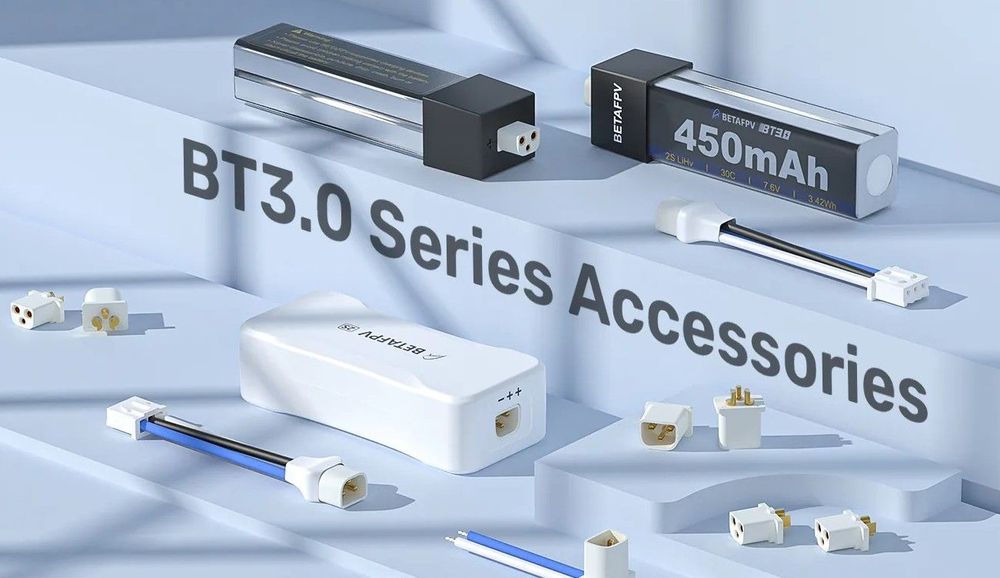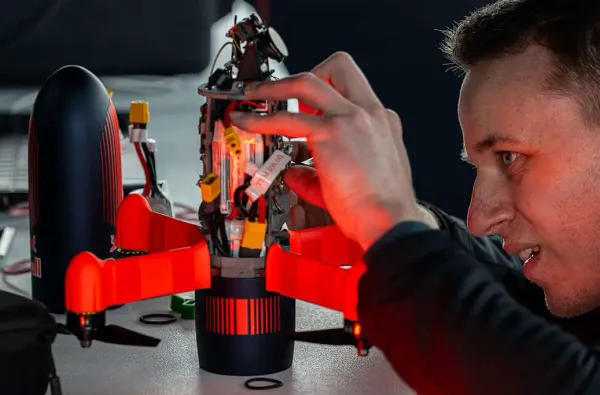The Future is Here, and It’s Streamlined!
Hey, tech fans! If you're tired of dealing with a spaghetti bowl of balance leads and connectors every time you fly your drone, we've got some electrifying news for you. BetaFPV just launched the BT3.0 connector, exclusively designed for 2S batteries. This bad boy promises to simplify your life while still delivering impressive performance. So, let’s get into the nitty-gritty and find out whether it’s worth making the switch.
What's the BT3.0 Connector and Why Should I Care?
Alright, let's talk about why this connector is the bee's knees. The BT3.0 is engineered to be a one-stop-shop for your 2S LiPo/LiHV batteries, replacing that tangled mess of XH2.54 balance and XT30 power connectors you’re used to. This 3-pin hero simplifies things without letting you down on the performance front.
Installation So Simple
Now, how easy is it to get this little wonder into your setup? Literally, as simple as plugging in your phone charger. Plus, say goodbye to those annoying balance leads. Yep, you heard me right—no more balance leads, which means one less thing to stress about when you’re flying high.
Charging, but Make it Hassle-Free
Charging batteries with the BT3.0 connector is like sipping a cold brew on a hot day — refreshingly simple. All you need is a single cable, and you've got two options for charging. Either go with a charger that's already BT3.0-friendly (yay, plug-and-play!) or use a BT3.0-to-XH2.54 adapter if you’re working with other chargers. As for non-compatible chargers, you might need to DIY an adapter. But hey, for the convenience, it's worth it, right?

Performance
So, let's talk specs. How does the BT3.0 stack up against its older sibling, BT2.0, and the XT30?
- BT3.0: 12A continuous, 20A peak, weighs 1.28g, and has dimensions of 10.1 * 9.1 * 5.4 mm
- BT2.0: 9A continuous, 15A peak, weighs 0.6g, and has dimensions of 8.5 * 6.0 * 4.2 mm
- XT30: 15A continuous, 30A peak, weighs 1.8g, and has dimensions of 12.4 * 10.2 * 5.2 mm
The BT3.0 is your go-to for 2S batteries if you're looking for a streamlined, lightweight connector that still packs a punch. It's lighter and more compact than the XT30 but doesn’t skimp on performance.
The Pros and Cons
What's to Love:
- Streamlined Charging: One cable to rule them all!
- Adios, Balance Leads: Just imagine a world where balance leads don’t exist.
- Less Weight, More Fun: Less bulk = better flight dynamics.
- Stellar Performance: Meets the power demands of most micro FPV drones.
Not So Fast:
- Compatibility Issues: Only for 2S batteries, so not exactly a universal soldier.
- Less Current Capacity: Falls a bit short of the XT30.
- Single Manufacturer: Currently, only BetaFPV offers this connector.
- Potential Costs: Other companies might have to pay up to use BT3.0, making it pricier for us consumers.

So, Is BT3.0 the Future or What?
The BT3.0 connector packs some serious advantages, especially if you're eyeing a lightweight 2S setup. It simplifies everything from charging to taking off. But hold your horses! The market is still catching up, so going all-in might be a tad premature. Maybe let’s wait and see how the BT3.0 ecosystem grows before we start saying goodbye to our old connectors.
So, that’s the lowdown on BetaFPV’s new BT3.0 connector. Is it the next big thing? Possibly. Should you get one now? Maybe hang tight for a bit. Either way, keep your eyes on the skies (and our blog) for more exciting updates!







